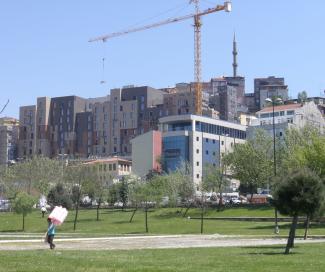Urban development
Why real-estate prices are rising fast in Istanbul

Whereas low-income residents live in dilapidated apartments in the traditional centre or in poorly connected settlements on the outskirts, the new middle and upper classes populate attractive locations. These locations are marked by new apartments, proximity to nature, views of the Bosporus and good infrastructure. More and more nature preserves and watersheds are yielding to the growing demand for exclusive residential housing and office buildings. Real estate prices are rising fast in the city centre. In historical districts, that often leads to razing, followed by new construction, or to restoration. Both make housing more expensive.
In principle, the state regulates the real estate market and urban infrastructure. The municipal authorities aim to drive urbanisation through new regulations on land use, large-scale infrastructure projects and the designation of new development areas. In order to do so, they form alliances with private companies and homeowners, encouraging private-sector investment.
For example, the city council has entered into public-private partnerships (PPPs) for individual housing projects, primarily for the new urban middle and upper classes. It has also approved projects that are financed entirely by private investors. The city administration focuses on directing and supervising the building plans. Project design is then largely left to developers, as long as they conform to the overriding urban development plan.







